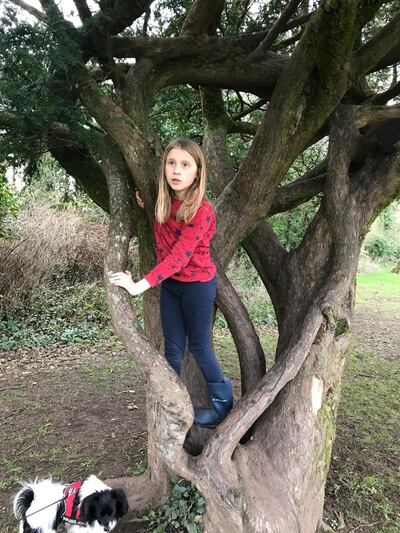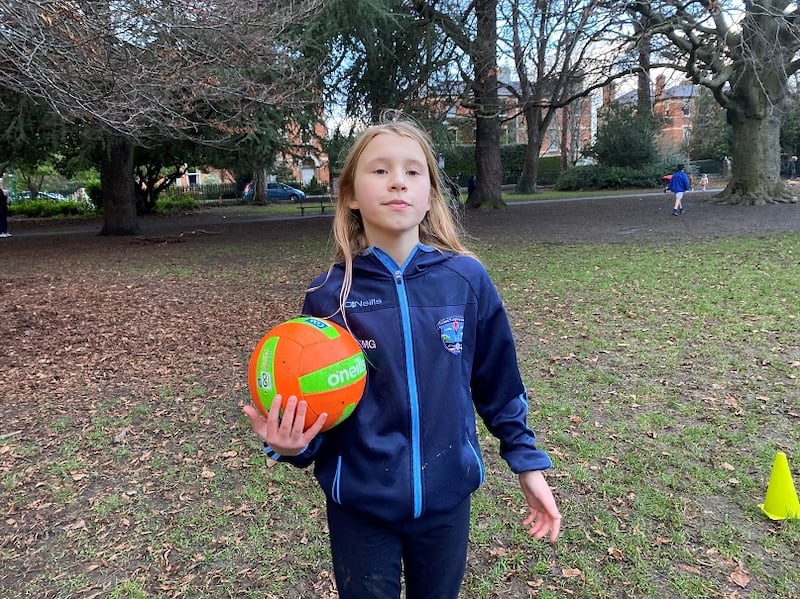There has been a slight change in schedule for the 10-year-old in our house of late. Before Christmas it was Gaelic on Tuesday, soccer on Wednesday, camogie on Thursday, Gaelic on Saturday and hockey and soccer on Sunday.
Nowadays it’s a more pared-down timetable. Outside of school work it is mainly Roblox. Every day of the week.
Roblox is an online platform that hosts millions of games. The ones we hear about most include Adopt Me and Brookhaven. There is also Among Us, but that is old now (or so I’m told).
From what I can glean, they seem to be variations on Minecraft (another hugely popular game) and Second Life. Players create their own avatars, which, to my uninitiated eye, look like characters out of a Lego movie.

These are sophisticated apps. A working universe is already there. Players can create their own houses, cars, lifestyles. They can play complicated skill games across many levels. In Adopt Me, for example, players have a menagerie of animals (with varying degrees of fabulousness) and can go to a market place where they trade their most valuable pet for a rake of lesser ones, or vice versa.
Oh, you see dozens of other avatars wandering through this world. They are “randomers” or, in other words, avatars created by kids from all over the world who are playing the game at the same time.
It’s a children’s platform with safeguards. Kids chat to only those they friend – though you do need to check they are their own real-life friends from school or play.
This is the key to its success. Because the game takes place in real time, a group of friends can play at the same time, each placing their avatars close to each other. They can tell each other where they are, either by messaging or on a live call.
Sorry, did I not mention that?
It's not enough to have one screen any more. You also need a phone where you are on a WhatsApp or Skype group call with a bunch of your friends, each excitedly talking over each other as they play the game, all shouting: "Teleport to me, teleport to me." This lasts for hours.
I know what you are thinking. I know what I am thinking. Weak, vacillating, pushover, bad parent.
Has it not been drilled into you that too much screen time is bad for the children and will ruin their eyes and impair their cognitive development? Have you not read the supplements in British magazines where perfect parents who rise at 5am to do Pilates and meditation say they limit their children’s screen time to half an hour a week and at weekends only? What? Half an hour a week? At weekends only? Pull the other one.
This third lockdown has led me to revise my opinion on screens and their perils. I still worry about the long-term impact screens will have on eyesight. But I am less convinced now that screens are altogether bad. It’s not just a third-lockdown thing. Or any riff on kids not having anything else to do and this being the lesser of many evils.
This time around I have seen the good side of technology for children, firstly as a communications tool to keep in touch with their friends when the world is closed down. Secondly, what surprised me most of all is that these digital games have provided an unexpected (and extraordinary) outlet for creativity. We will return to that.
There was a psychologist on RTÉ not long ago who made a canny observation that before parents start imposing rules on their children's screen time, they should first of all do an audit of their own use. My work involves me staring vacantly into a screen for hours every day. It doesn't stop when work stops. Your smartphone is like a box of chocolates. You know you should stop dipping into it, but before you know it you're down into the second layer and working your way through it.
When lockdown first happened it was all about Zoom. School. Music lessons. Quizzes. Baking. Even backyard ball skills. All of that was Zoomed. That has continued as has daily exercise outside and also via Joe Wicks. All that is good. Along with that, since the summer, in this house at least, there has been a gradual shift towards online games.
Lately that has taken on a new dimension. I noticed in January that the storage on my computer was mysteriously full. When I checked, there were screen recordings lasting for hours from the role-play game Brookhaven.
What was happening here? My 10 year old explained they were making mini-movies, namely a stop-motion film edited down from the screen recording. Working off a freshly-minted script (yes, a full script with dialogue and characters is written first) the 10-year-old director – in a group call that sounds like the Tower of Babel – allots roles to each of their friends and tells them what costumes to put on their avatars. Within the game – and its fabulous locales – the avatars are then sent to various locations to act out the story, which tends to be a salutary moral tale about being hacked or not being popular or the coronavirus or just a fun music video. In each scene, each character is told to do certain actions and to type in certain dialogue (it appears as a speech bubble above their heads).
From those hours of footage a mini-movie is created. There are special apps for editing movies, besides native applications such as iMovie. YouTube has gazillions of "how-to" videos on technical things like laying down music tracks, sound effects, cross-fades, using green screens, using visual effects, black and white effects, sub-titles, slow motion, cropping, intros, outros. The sophistication of the finished movie is stunning.
You think to yourself, I have a budding Lenny Abrahamson, a prodigy, here. And then you realise, there are thousands of other kids across Ireland doing exactly the same thing, making their own mini-movies to the same exacting standards. After all, this is the generation who can count swiping an iPhone as one of the earliest learning experiences, for whom the digital world is as natural as pucking a sliothar is for a child born in Kilkenny.
Did I mention YouTube?
It is the Oracle, the Wikipedia for this generation. Besides an endless cast of loud American and Australian teenagers (some have millions of subscribers) giving live commentary as they play various games, YouTube is where kids learn how to hone their digital skills. There is some really good stuff too, including an impressive YouTuber called Moriah Elizabeth who does a weekly video on art, including how to give a squishy toy a makeover (I know it sounds niche but she has millions of followers).
And that leads to the next moral quandary. Your 10 year old suddenly wants to set up their own YouTube channel to showcase their work. The process involved in that is long and complex, similar to the one that follows the first request for a puppy. The outcome is also similar, although again you have to be sure that the child’s channel within your adult channel is child-safe and can be monitored at all times.
We are still doing lots of outdoorsy things such as GAA, running, cycling and walking (no swimming at the moment as it’s outside our 5km). Yet, it’s still a struggle sometimes to keep screen time in proportion. That said, there are upsides to it that I probably didn’t see before the outdoors world ground to a halt.

A 10 year old writes
In Adopt Me you learn how to take care of animals and sometimes babies. They will present you with an egg and you have to hatch that egg to get an animal. The animal will then have tasks that you have to complete, for example, “I’m hungry!”; “I feel sick”; “Let’s go to the hospital”; “Let’s go camping!”
Sometimes, if you have good luck, you can hatch a legendary out of this egg. A legendary is a very high standard of pet that is very valuable when trading. Yes, you can also trade. Also, the reason people do pet tasks is because you can get (virtual) money and with that money you can buy another egg. Also, it is because every time you do a task for our pet, it ages up a little. That is where Neons come in. Neons are a variation of pet that you need to work really hard to get because firstly you need four of that pet. Then you need to age them all up with their tasks that can take forever.
Here are all the stages you need to complete before making a Neon: newborn, junior, pre-teen, teen and post-teen. Then it is fully grown.
Brookhaven is a game where you can role-play with your friends. For example, one friend will be the mum or dad and everyone else the children.
I started making mini-movies in January and have made four so far. I was using iMovie but now use KineMaster which is free and good for editing. I have learned from YouTube how to do intros and outros and also end screens, green screens and thumbnails.











